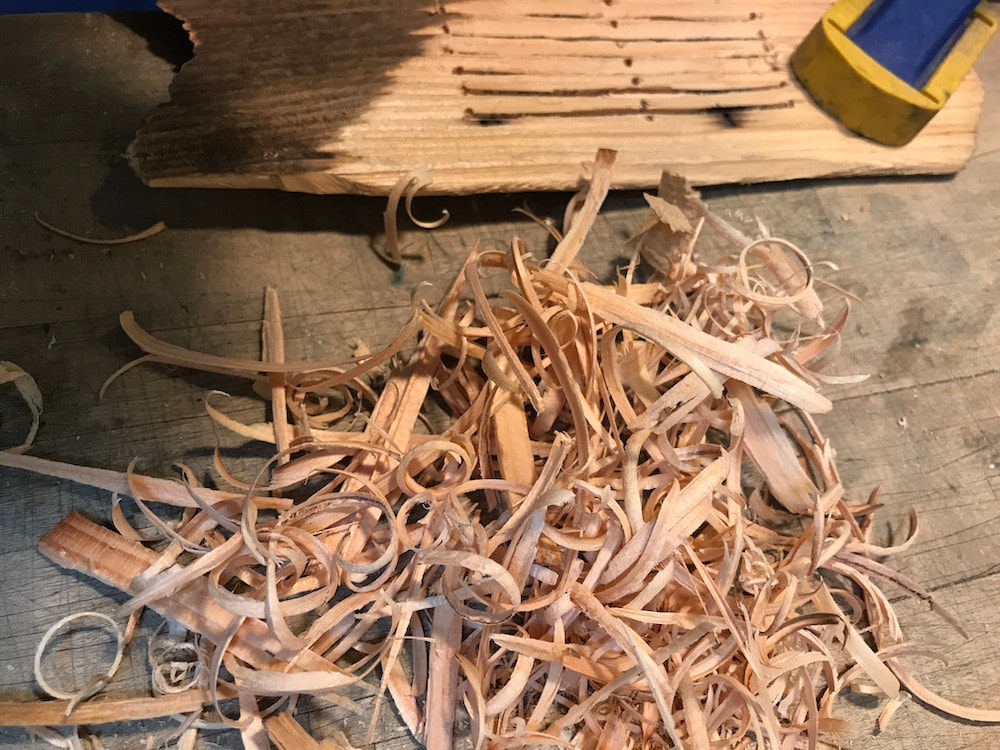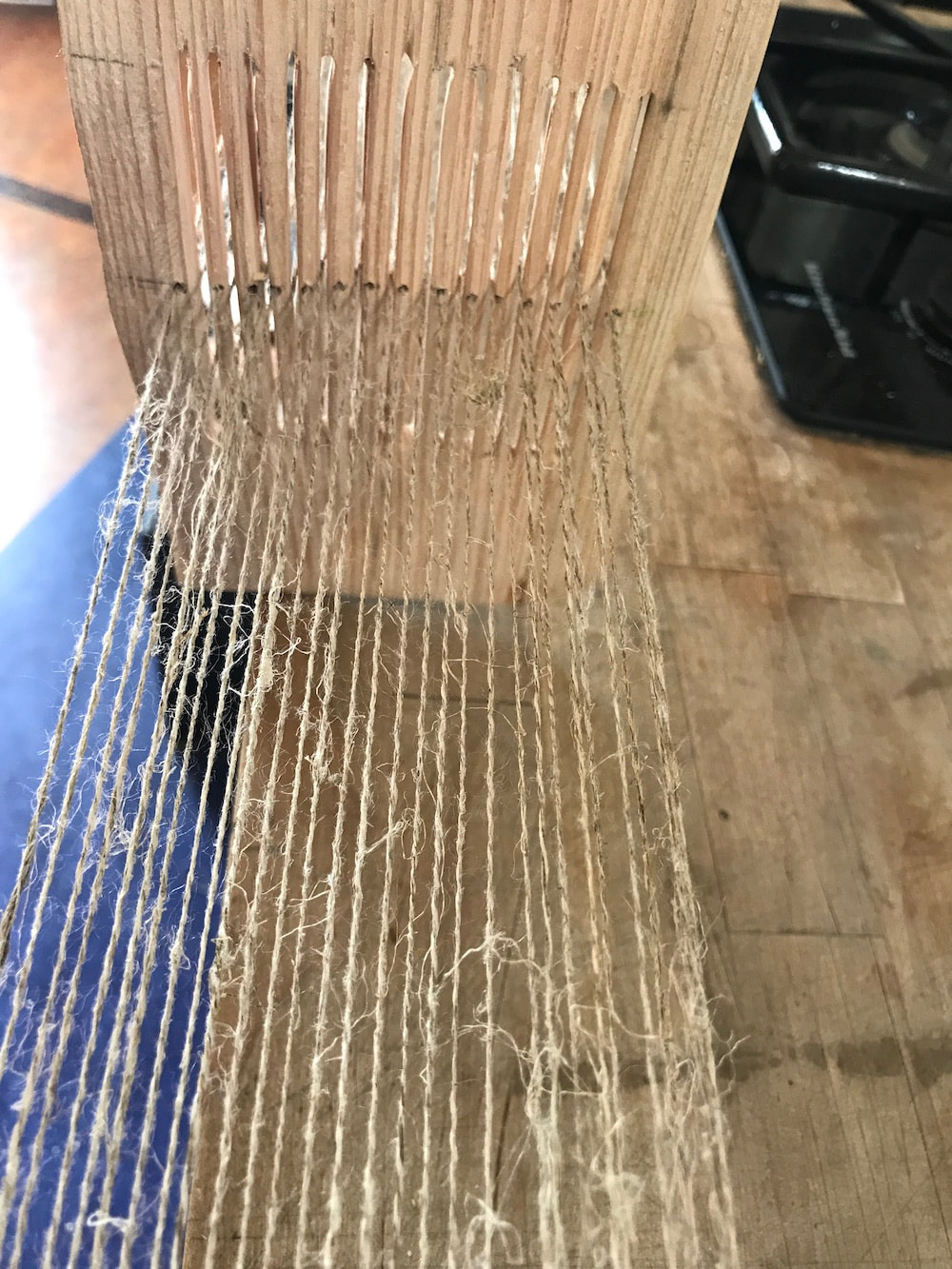all show up at once,
is there a hierarchy among them--
materials, tools, technique(s)--
and if so, what is it?
into another fully functional
medieval midden rigid heddle--
nay, my assumption--
of hand spun linen for its first warp?
that's what I used last time.
And I'll pretty much always choose (assume)
hand over mill spun yarn for everything.
is so rough and uneven that I have three breaks
before I've woven an inch--
a choice must be made.
First choice: a post-warping application
of a flour and water size.
This tamed the hairiness but didn't thin out the thick spots.
Second choice: enlarge the heddle holes --
not possible without the risk of going through the side walls
given my super simple tools and rough construction approach.
Third choice: change either warp or heddle.
I'd perhaps have re-threaded,
as I think it would have worked just fine
with a plastic heddle's larger, smoother holes.
And I did considered it-- briefly.
But the other ideas rebelled.
I wanted to use, or at least try, the firewood heddle.
And anyway, I needed its sett of 8 epi
for another part of the puzzle.
So a new warp of mill spun linen
it would have to be.
and the linen I have is too fine for that sett,
but doubling the strands while threading
by pulling loops through the slots and holes,
was easy as pie.
as readers of Tucking the Tails now know,
(perhaps also noticing how, in the photo below,
I combined the wrapped tail and double warp techniques
to begin the wedge weave square).
that was one of the other unignorable ideas
I wanted to mess around with,
a prime mover in my 'need'
for a new heddle with a sett of 8 epi.
just hearing the words "wedge weave"
as part of the discussion on Change the Shed,
led me to try a sample on the last bit of warp
from the book of light and color--
and then again, somewhat more deliberately,
with a four selvedge warp on a pvc pipe loom.
(of the clean back of the four selvedge tapestry
as it is being released from the supplemental warps),
was supposed to be a demonstration
of the joys of Tucking the Tails
(if not four selvedge tapestry weaving as well),
but I forgot to put it in the post.
about the weird and wonderful pleasure
of a somewhat slanted weave structure--
and the love at first pick
between wedge weave
and plied coffee filter paper yarn.
the two weaving samples
had used up all my plied paper.
No biggie to make some more--
except then came another idea.
What about plying the singles paper
with some singles hand spun linen?
Would it create a wonderful yarn with linen strength
and the delicious hand of the coffee filters?
Or would I be doing a disservice to them both?
And, in the aforementioned
hierarchy of ideas,
was that a question to ask,
or a thing try?
Try, of course.
At the very least, if I hated it
I'd get to cross the idea off my list.
Rebecca Mezoff explores
the reciprocal relationship
between loom structure and design.
In module 5 (which just opened),
she talks about the interactions
between design and materials.
Who, or what, is in charge?
What choices do we have?
Wherein lies control?
And is control even a desirable thing?
How much adventure feels right
or is even possible given the grid of warp and weft?
How much subtle delight can a person stand?
Except--that there are never any definitive answers,
at least for me,
beyond the ones I am experiencing
and the choices I am making in the moment,
as this color, this warp, this tension, this sett,
this light, this position, this way of opening the shed,
this hand motion, this mug at my side, this bobbin,
this skill set that I have, this level of strength in my hands today,
this funny heddle notch where my thumb fits so perfectly,
all come together, randomly or no,
to help me make whatever on earth it is
that I am making today.
So that's all I know for sure.
And may the questions keep coming.






















